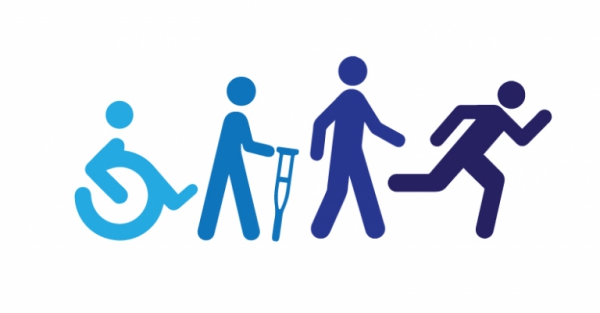Prevalence
Incidence and prevalence are difficult to estimate because hypocalcemia is a multifactorial diagnosis. Postsurgical hypoparathyroidism is decreasing as thyroid and parathyroid surgery techniques improve.
Decreases in total serum calcium are quite common in ill patients, but ionized calcium typically remains normal.
Characteristics/Clinical Presentation
In neonates, hypocalcemia is more likely to occur in infants born of diabetic or preeclamptic mothers. Hypocalcemia also may occur in infants born to mothers with hyperparathyroidism. Clinically evident hypocalcemia generally presents in milder forms and is usually the result of a chronic disease state. In emergency department patients, chronic or subacute complaints secondary to mild or moderate hypocalcemia are more likely to be a chief complaint than severe symptomatic hypocalcemia. In an elderly patient, a nutritional deficiency may be associated with a low intake of vitamin D. A history of alcoholism can help diagnose hypocalcemia due to magnesium deficiency, malabsorption, or chronic pancreatitis. Acute hypocalcemia may lead to syncope, congestive heart failure, and angina due to the multiple cardiovascular effects. Neuromuscular and neurologic symptoms may also occur.
Neuromuscular symptoms include the following:
- Numbness and tingling sensations in the perioral area or in the fingers and toes
- Muscle cramps, particularly in the back and lower extremities; may progress to carpopedal spasm (ie, tetany)
- Wheezing; may develop from bronchospasm
- Dysphagia
- Voice changes (due to laryngospasm)
Neurologic symptoms of hypocalcemia include the following:
- Irritability, impaired intellectual capacity, depression, and personality changes
- Fatigue
- Seizures (eg, grand mal, petit mal, focal)
- Other uncontrolled movements
Chronic hypocalcemia may produce the following dermatologic manifestations:
- Coarse hair
- Brittle nails
- Psoriasis
- Dry skin
- Chronic pruritus
- Poor dentition
- Cataracts
Associated Co-morbidities
- Epilepsy (in adults or in children): hypocalcemia secondary to anticonvulsant therapy
- HIV: hypocalcemia due to calcium chelation in foscarnet therapy
- Chronic liver disease: defective hydroxylation of vitamin D
- Intestinal malabsorption
- Tuberculosis: isoniazid therapy
Medications
- Calcium chloride
- Calcium Gluconate
- Calcium carbonate
- Calcium citrate
- Calcitrol
- Vitamin D
Etiology/Causes
The causes of hypocalcemia include the following:
- Hypoalbuminemia
- Hypomagnesemia
- Hyperphosphatemia
- Multifactorial enhanced protein binding and anion chelation
- Medication effects
- Surgical effects
- PTH deficiency or resistance
- Vitamin D deficiency or resistance
Patients with burns & renal dysfunction may be at risk for this disorder
Systemic Involvement
Acute hypocalcemia may lead to syncope, congestive heart failure (CHF), and angina due to the multiple cardiovascular effects. Neuromuscular and neurologic symptoms may also occur.
Neuromuscular symptoms include the following:
Numbness and tingling sensations in the perioral area or in the fingers and toes
Muscle cramps, particularly in the back and lower extremities; may progress to carpopedal spasm (ie, tetany)
Wheezing; may develop from bronchospasm
Dysphagia
Voice changes (due to laryngospasm)
Neurologic symptoms of hypocalcemia include the following:
Irritability, impaired intellectual capacity, depression, and personality changes
Fatigue
Seizures (eg, grand mal, petit mal, focal)
Other uncontrolled movements
Chronic hypocalcemia may produce the following dermatologic manifestations:
Coarse hair
Brittle nails
Psoriasis
Dry skin
Chronic pruritus
Poor dentition
Cataracts
Medical Management (current best evidence)
Most hypocalcemic emergencies are mild and require only supportive treatment and further laboratory evaluation. On occasion, severe hypocalcemia may result in seizures, tetany, refractory hypotension, or arrhythmias that require a more aggressive approach.
In the emergency department, magnesium and calcium (in their many different forms) are the only medications necessary to treat hypocalcemic emergencies. The consulting endocrinologist may choose to prescribe any of the various vitamin D supplements depending on laboratory workup findings, and oral calcium supplementation for outpatient therapy.
Physical Therapy Management (current best evidence)
Due to the nature of hypocalcemia being secondary to a primary disease state, physical therapy management includes recognition of the signs and symptoms thereof. Appropriate action taken and appropriate referral.
Differential Diagnosis
- Acute Renal Failure
- Hydrofluoric Acid Burns
- Hyperparathyroidism
- Hyperphosphatemia
- Hypoalbuminemia
- Hypomagnesemia
- Hypoparathyroidism
- Metabolic Alkalosis
- Pancreatitis, Acute










